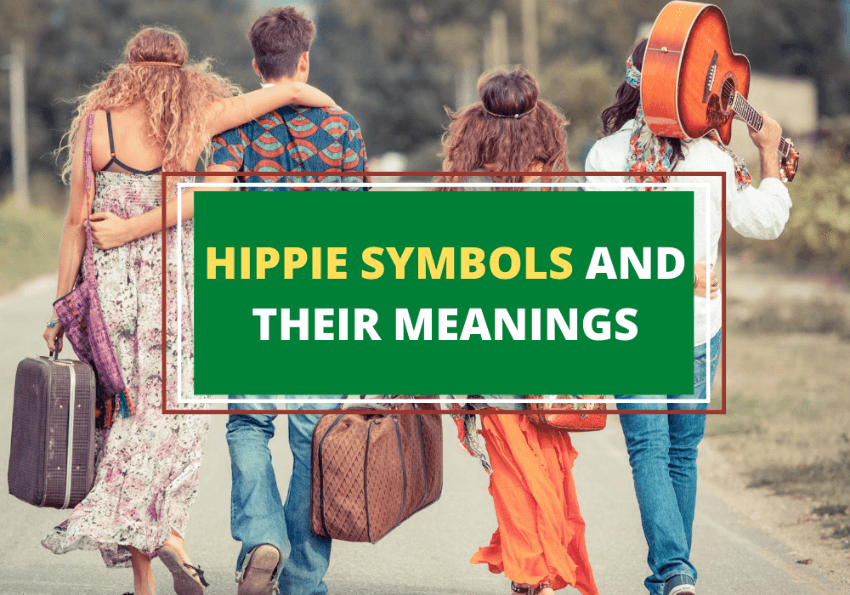
Table of Contents
The Hippie movement began as a countercultural youth movement in the 60s. Beginning in the United States, hippie culture began to rapidly spread around the world. Hippies rejected established social norms, protested war and focused on peace, harmony, balance and eco-friendliness. These concepts can be seen in the many hippie symbols.
Almost all symbols in hippie culture are about achieving balance and peace and being in communion with the spirit or with nature. These symbols have been adapted from various ancient cultures around the globe, such as ancient Egypt, Chinese, Celtic and Middle Eastern. These symbols are often worn in jewelry, depicted in artwork or clothing or simply kept close as an amulet.
Here’s a quick look at some of the most popular symbols in hippie culture and their significance.
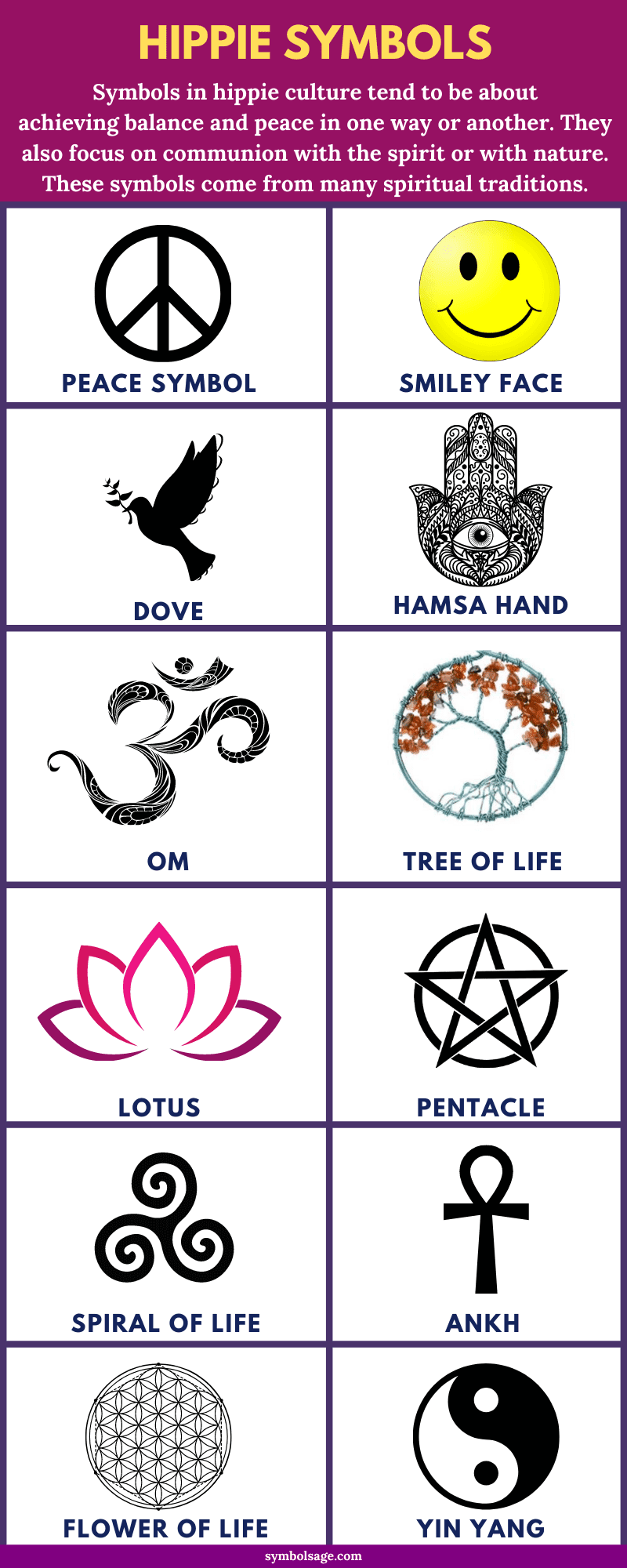
Yin Yang
The Yin and Yang concept originated in ancient Chinese metaphysics and philosophy. The symbol is representative of the primal complementary and opposing forces that are found in everything in the universe.
The darker element, Yin, is passive, feminine and downward seeking, correlating with the night. Yang, on the other hand, is the brighter element, active, masculine, light and upward seeking, corresponding with the daytime.
The Ying and Yang symbol serves as a spiritual reminder that the balance between two opposing forces, such as darkness and light, provides the most helpful and sensible approach to living a full and meaningful life. It also indicates that one can’t exist without its opposite.
The Smiley Face

The smiley face is an incredibly popular image, created in 1963 by Harvey Ross Ball. It was originally created for the State Mutual Life Assurance Company as a morale booster and was used on buttons, signs and posters. At the time, the image wasn’t copyrighted or trademarked. In the 1970s, brothers Murray and Bernard Spain used the image and added a slogan ‘Have a Happy Day’ to it. They copyrighted this new version and in less than a year, over 50 million buttons with the smiley face on them, were sold along with countless other products. The meaning of the smiley face is quite clear since it represents one thing: be happy. The yellow color of the image adds to this positive symbolism.
Doves

The dove is one of the most well-known peace symbols, dating back to biblical times, especially if paired with an olive branch. However, it was Picasso’s painting Dove which popularized the symbol in the modern times, becoming a popular symbol after World War II, and was chosen as the main image for the First International Peace Conference in Paris, 1949.
The Peace Sign

The peace sign was first designed in the 1950s as a logo for the Campaign for Nuclear Disarmament. Gerald Holtom, the designer, used the semaphore letters N (Nuclear) and D (Disarmament) enclosed in a circle.
Some say the symbol looks like a defeated man, with his hands hanging down, prompting them to call it a negative symbol. It’s also been called a Satanic or occult symbol, as it supposedly features an upside-down cross.
However, today the peace sign is one of the most popular peace symbols. It signifies a wider message of ‘peace’ and was adopted by the counterculture (hippie culture) and anti-war activists in the US and other countries around the world.
Hamsa
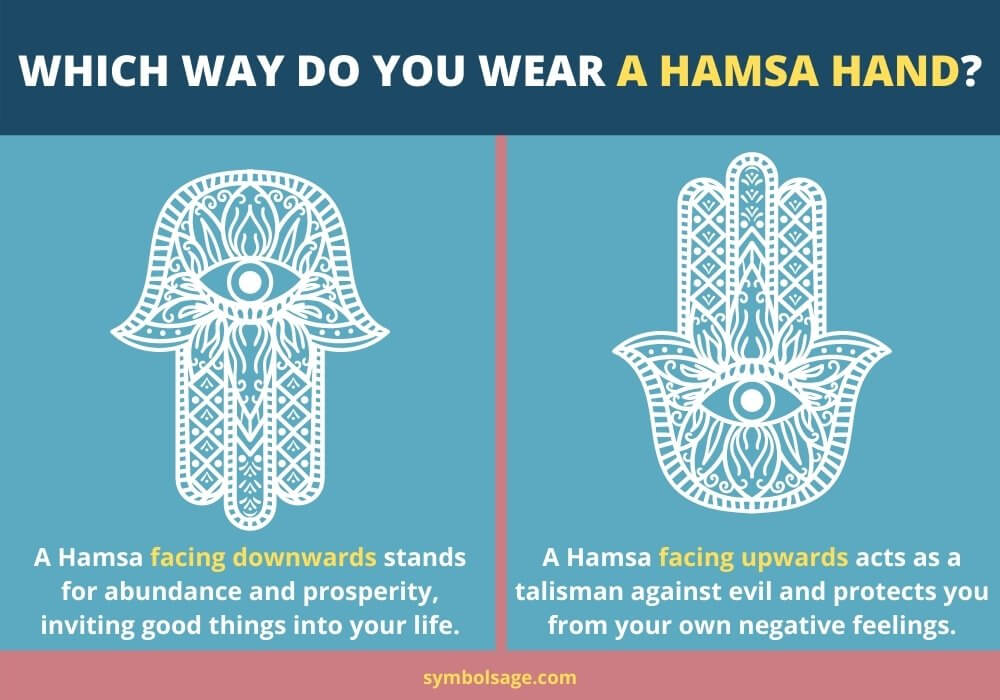
The hamsa is an ancient symbol that goes as far back as Carthage and Mesopotamia. It’s fairly common in the Middle East and is often found in Hebrew and Arabic culture. The word ‘hamsa’ is Arabic for ‘five’ and symbolizes the five digits of the God’s hand. It’s spelled in several ways: chamsa, hamsa, hamesh and khamsa.
In many cultures and religions, hamsa is considered a protective amulet and bringer of good fortune. The symbolism of hamsa includes an eye in the center of the palm. This is said to be the evil eye that wards off evil directed at the wearer. These associations make the symbol a popular choice for amulets and jewelry among hippies.
The Om Symbol
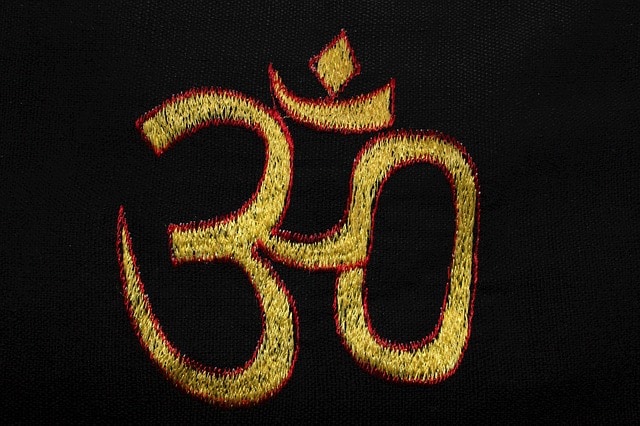
The Om symbol has sacred significance in many eastern religions, including Buddhism, Hinduism and Jainism. The sound Om is considered a sacred syllable that encompasses everything in the universe, while the symbol provides a visual representation.
According to the Hindu Mandukya Upanishad, Om is ‘the one eternal syllable of which everything that exists is but the development. The present, past and future are all included in the one sound and everything that exists beyond these three forms of time is implied in it.”
The Om sound is popularly used as a mantra in meditation and yoga to reach deeper levels of concentration and relaxation.
Ankh
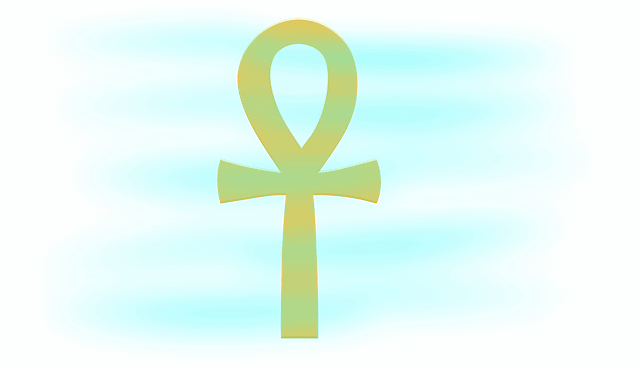
The ankh is a hieroglyphic symbol that originated in Egypt, appearing on tombs, temple walls and depicted in the hands of almost all the Egyptian deities. The Egyptians often carried the ankh as an amulet since it was believed to bring good-fortune and wealth and to symbolize regeneration and eternal life. Today, it’s used by many hippie people as a sign of spiritual wisdom and long life.
The Tree of Life
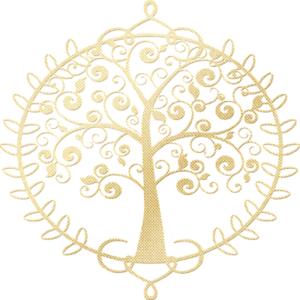
Found in several different religions and cultures across the world (including Chinese, Turkish and Norse cultures as well as Buddhism, Hinduism, Christianity and Islamic Faith), the Tree of Life is highly symbolic with different interpretations based on the culture its viewed in. However, the general symbolism of the Tree of Life is of harmony, interconnectedness and growth.
In spiritual and cultural traditions, the Tree of Life symbol is seen as having life-giving and healing properties. It’s a symbol of the connection of life and the elements such as fire, water, earth and air, symbolizing one’s personal development, individual beauty and uniqueness.
Just like the tree’s branches, which become stronger and grow towards the sky, we too become stronger, striving for wisdom, greater knowledge and new experiences as we go through life.
The Lotus Flower
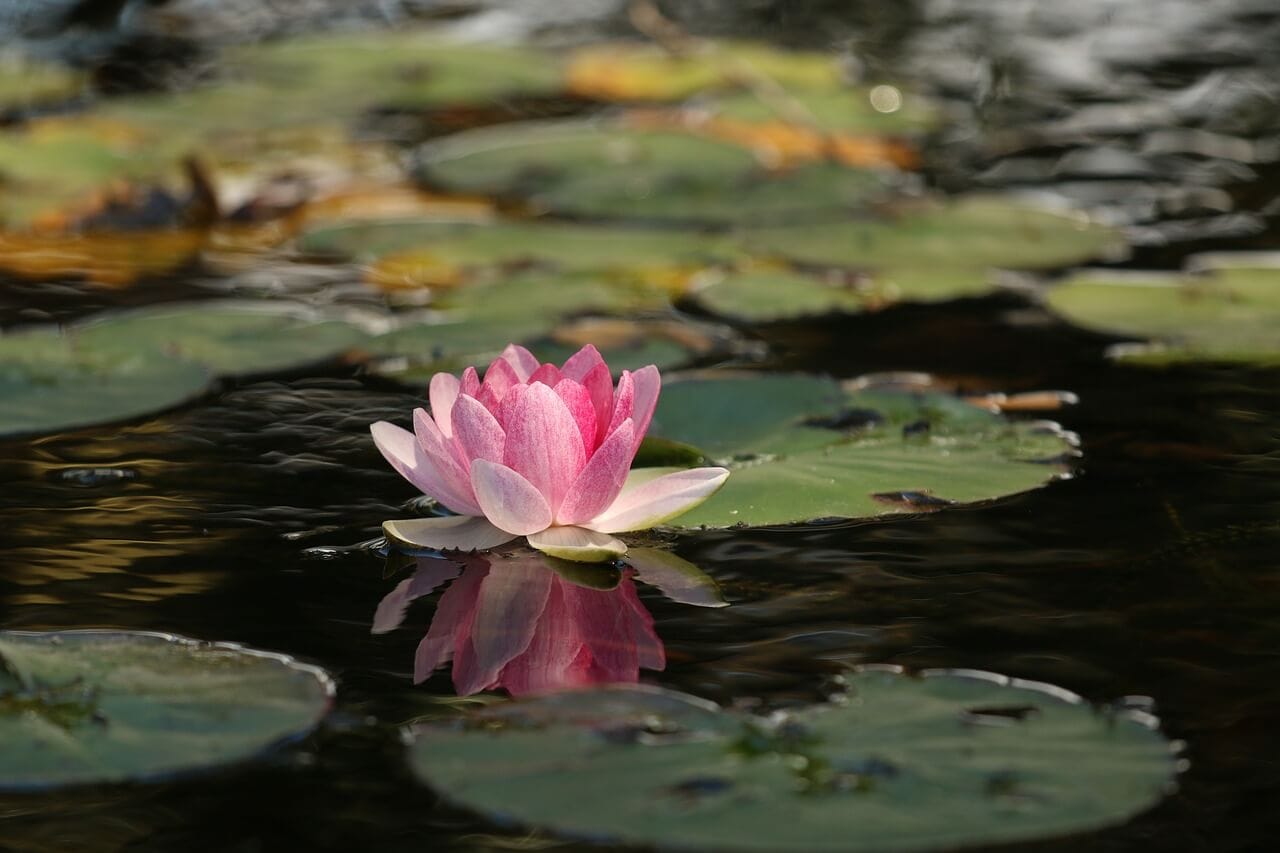
The lotus flower is considered a sacred flower and symbol by both Buddhists and Hindus. By emerging from the muddy water and blooming clean and pure, the flower symbolizes the journey from darkness into light. The lotus flower also signifies the importance of purity and detachment of the mind, body and speech as if floating above the murky waters of desire and attachment.
In hippie culture, the lotus symbolizes minimalist living in harmony with nature, without connection to materialistic objects. It’s also a symbol to inspire, motivate and remind that no obstacle in life is impossible to get through.
The Spiral of Life (Triskelion)
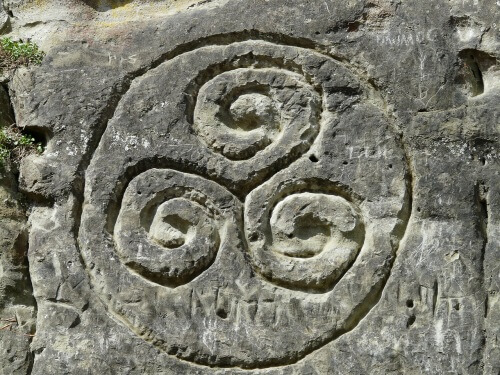
The spiral of life, also known as the Triskelion or Triskele, is an ancient Celtic symbol. It was used mainly as a decorative motif, and was popular in ancient Celtic art.
Christians adapted the triskele to represent the Holy Trinity (the Father, the Son and the Holy Spirit). It’s still used by Christians of Celtic descent as a symbol of their faith.
In general, the triskele represents change, eternity and the continuous movement of the universe.
The Flower of Life
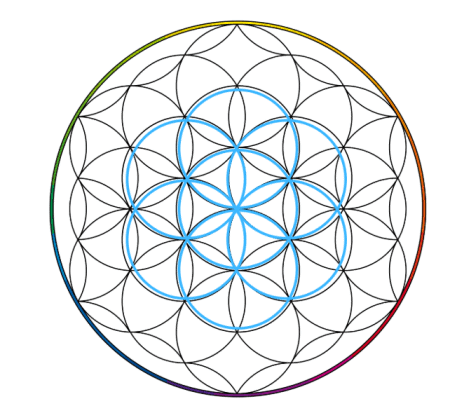
The flower of life is considered one of the most important symbols of all, as it’s believed to contain within it all patterns of creation, providing the fundamental structure of life as a result. The pattern is simple and yet complex – it’s a series of overlapping circles spreading out in all directions.
Some people believe that the flower is symbolic of the connection with the Universe on the level of the soul. They see it as a portal to other worlds, dimensions and the alignment of one’s energy with high vibrations. For hippies, this symbol represents unity, connection and the fundamentals of life.
The Pentacle
The Pentacle is a five-pointed star set within a circle. The ancient Greek philosopher Pythagoras assigned the four elements water, earth, fire and air to the four lower points of the star and the spirit to the point on the top. According to Pythagoras, this arrangement is the correct order of the world, with all the material things subject to the spirit.
This symbol has been used in ancient Japanese and Chinese religions as well as in Ancient Babylonian and Japanese culture. It’s a well-known pagan symbol. For hippies, wearing it is a way of showing respect for the Earth.
Wrapping Up…
There are hundreds of symbols used in hippie culture out of which we’ve listed only a few. Any one or more of these symbols can be seen in the home of a hippie and they’re also used on different types of hippie jewelry like amulets and pendants. While some wear them for good luck, protection or spiritual reasons, others prefer to wear them purely as a fashion trend or statement.








